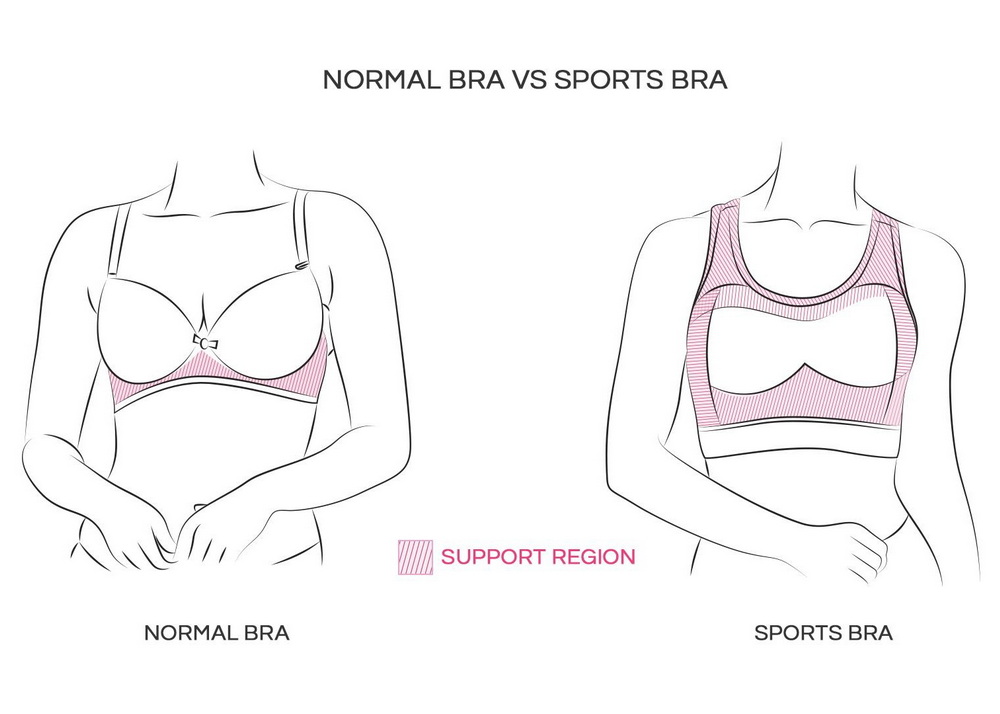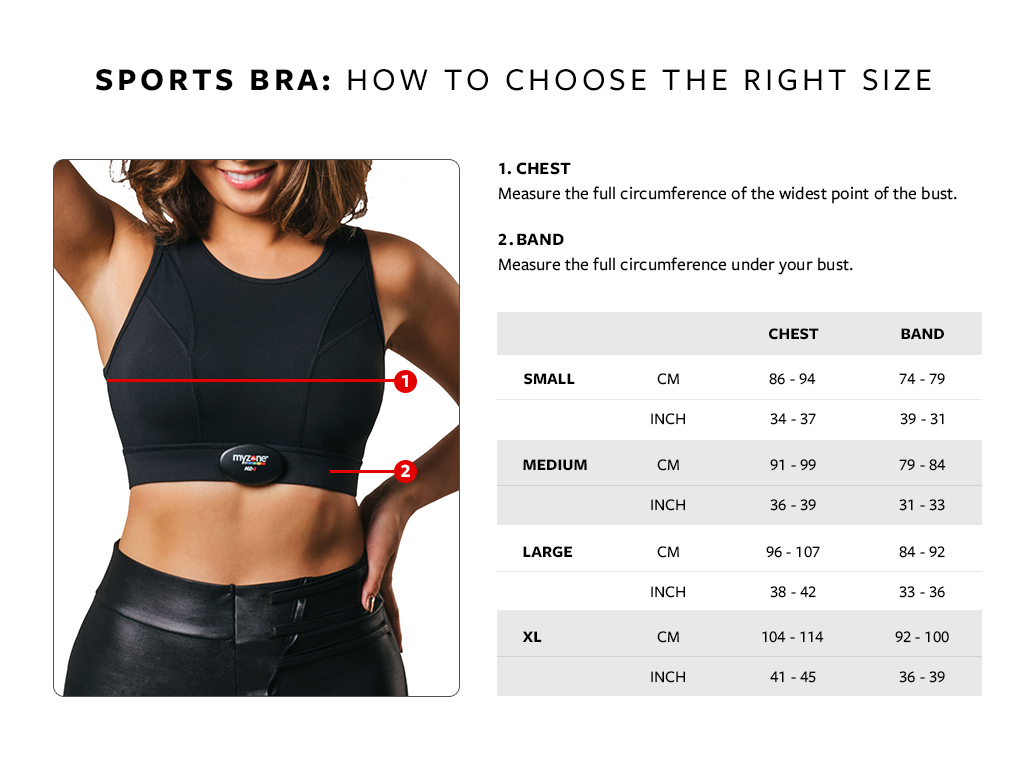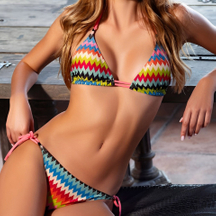Content Menu
● What Are Sports Bras vs Regular Bras?
● Understanding Bra Sizes
>> Regular Bra Sizes
>> Sports Bra Sizes
● Are Sports Bra Sizes the Same as Regular Bras?
● How Are Sports Bra Sizes Determined?
>> Why Sizing Is Confusing
● Key Functional Differences
>> Support Mechanisms
>> Materials Matter
>> Design and Structure
● How to Measure for Sports Bras (And Why It's Different)
>> Steps to Correct Fitting
>> Sister Sizing
● Impact of Activity on Sizing and Choice
● Common Myths About Sports Bra Sizing
● Key Benefits of Sports Bras
>> Health and Performance
>> Everyday Use
● Downsides of Wearing the Wrong Bra for Workouts
● Durability and Care Tips
● Choosing the Right Bra by Body Type
● Personal Preferences and Fashion Considerations
● Conclusion
● Frequently Asked Questions & Answers
>> Related Questions and Answers
● Citations:
When searching for athletic comfort and support, many wonder: Are sports bra sizes the same as regular bras? The answer is more nuanced than a simple yes or no. This article explores crucial differences in sizing, fit, materials, functions, style, measurement techniques, common issues, and recommendations, helping readers make informed choices for both athletic and everyday needs.[10][11][12][13][14]

What Are Sports Bras vs Regular Bras?
Sports bras are engineered for physical activity—running, jumping, yoga, or daily errands—focused on minimizing movement and maximizing support. Regular bras are designed for everyday comfort, aesthetic shaping, and versatility under various clothing styles, but offer less structure for impact or motion.[1][5][7][8]
| Feature | Sports Bra | Regular Bra |
| Support | High (minimizes bounce) | Moderate-Low (aesthetic/shape) |
| Material | Moisture-wicking, breathable | Cotton, lace, satin, blended fabrics |
| Fit | Structured, higher neckline, wider straps | Flexible, various styles, softer fabrics |
| Purpose | Physical activity, motion reduction | Shape enhancement, daily comfort |
Understanding Bra Sizes
Regular Bra Sizes
Regular bras are typically sized using a combination of band size and cup size. For example, a bra size might be represented as 34B, where "34" refers to the band size (the measurement around the ribcage) and "B" refers to the cup size (the volume of the breast).
Sports Bra Sizes
Sports bras, on the other hand, can be a bit different. While many sports bras are available in traditional sizes (like 34B), they are also often categorized into general sizes such as small, medium, large, and extra-large. This can lead to confusion about whether the size of a sports bra is the same as that of a regular bra.
Are Sports Bra Sizes the Same as Regular Bras?
The short answer is yes, sports bra sizes are generally the same as regular bra sizes. However, there are some important distinctions to consider:
1. Fit and Support: Sports bras are designed to fit more snugly than regular bras. This snug fit is essential for minimizing breast movement during physical activities. Therefore, while your size may be the same, the fit will feel different.
2. Design and Function: Regular bras are often designed for aesthetics and comfort, enhancing the shape of the breasts. In contrast, sports bras prioritize support and functionality, often using materials that wick away moisture and provide compression.
3. Sizing Variations: Different brands may have slight variations in sizing. It's always a good idea to check the specific brand's sizing chart when purchasing a sports bra.
How Are Sports Bra Sizes Determined?
Unlike regular bras, which use a combination of band size (e.g., 34, 36) and cup size (e.g., B, C, D), many sports bras use generalized sizes such as Small, Medium, Large (S–XL), XS–XXL, or even numbered sizing systems. However, some brands also offer sports bras with classic band/cup sizing, especially in styles intended for heavy support or larger busts.[12][14][15][10]
Key differences:
- Letter sizing (S-XL): Covers broad measurement ranges. E.g., Medium may fit 34B or 32C.[11]
- Band/cup sizing: Mirrors regular bra measurement, eases conversion, but still requires attention to brand-specific charts.[15]
- Fit norms: Sports bras are typically tighter due to their compression function, unlike the relatively relaxed fit of regular bras.[1][12]
Why Sizing Is Confusing
Brand variations are common: One company's "Medium" may fit very differently from another's. Always consult brand-specific sizing charts and try bras on when possible. Migration between styles, such as switching from a regular bra to a sports bra for workouts, is best achieved by using measurement-guided selection.[14][15]
Key Functional Differences
Support Mechanisms
- Compression bras: Press breast tissue against the chest, minimizing movement; best for smaller busts or low-impact activities.[4][13]
- Encapsulation bras: Use separate cups to encase each breast, more suitable for larger breasts or high-impact activities.[13][4]
- Hybrid styles: Combine the benefits for maximum control and comfort during intense exercise.[4]
Materials Matter
Sports bras use high-performance, moisture-wicking fabrics to stay dry and prevent chafing and rashes during workouts. Regular bras may use soft materials, like lace or cotton, ideal for regular daily use but ineffective for intense physical activity due to poor sweat management.[3][5][6][7]
Design and Structure
- Wide Straps: Distribute weight better and prevent shoulder pain in sports bras.[6][1]
- Reinforced Bands: Ensure firm positioning and minimize under-bust slip.[12][1]
- Higher Necklines: Reduce cleavage exposure and improve support.[1]
- Variety in Regular Bras: From plunge to balcony, padded to wire-free, maximizing outfit adaptability rather than performance.[5][8]
How to Measure for Sports Bras (And Why It's Different)
Steps to Correct Fitting
1. Bust measurement: Taken at the fullest part of the breast while standing straight.[10][12]
2. Band measurement: Measured tightly under the bust for accuracy.[15][10]
3. Convert to sports sizing: Use the brand's recommended chart, noting fit style (compression/encapsulation) and bust volume.[14][15]
Tip: Sports bras should feel snug but not restrict breathing or pinch. There should be no bulging or gap in the cups, and the band must remain level even during movement.[12][1]
Sister Sizing
If the recommended size feels off, "sister sizing" allows adjustment: change band or cup size inversely to maintain volume (e.g., from 34C to 36B or 32D).[16]
Impact of Activity on Sizing and Choice
Different sports and body types will necessitate different support levels:
- Low-impact: Light yoga, walking—compression bras or soft encapsulation suffice.[13]
- Medium-impact: Dance, cycling, hiking—moderate structure, often encapsulation for mid-sized busts.[6][13]
- High-impact: Running, HIIT—maximum support, hybrid encapsulation/compression, reinforced bands and straps are mandatory.[6][13]
Common Myths About Sports Bra Sizing
- "Sports bras fit the same as regular bras." False: They run tighter due to support functions, often requiring users to size up or choose adjustable designs.[10][12]
- "An S-XL sports bra is fine for every body type." False: Larger and smaller busts may need band/cup sizing for precision and comfort.[3][1]
Key Benefits of Sports Bras
Health and Performance
- Prevents tissue damage: Motion-reducing design prevents ligament stretching and breast sagging, which is risked during impact exercise without proper bra support.[1][6]
- Reduces back and shoulder pain: Even weight distribution and snug bands lessen strain versus regular bras with narrow straps or wire.[5][1]
- Improves workout focus and confidence: Knowing breasts are secure during activity enables better performance and peace of mind.[7]
Everyday Use
Sports bras aren't just for the gym. Many women choose them for daily wear thanks to:
- Comfort and coverage[1]
- Bust support for active days
- Health benefits—especially for larger busts or post-surgical recovery[6]
Downsides of Wearing the Wrong Bra for Workouts
- Discomfort or pain
- Breast tissue damage and sagging over time[3][1]
- Rashes, chafing, and excess sweat
- Posture problems and decreased athletic performance
Durability and Care Tips
Sports bras usually withstand more rigorous wear and require specific care:
- Wash after each use, preferably in a mesh bag on gentle cycle
- Avoid dryer heat, which breaks down elastic fibers[6]
- Replace sports bras every 6-12 months for frequent use; elastics and support degrade over time[14][6]
Choosing the Right Bra by Body Type
- Petite/B cup or smaller: May benefit from compression bras, adjustable straps, and racerback design.
- Mid-size (C-D cup): Hybrid or encapsulation styles, wider bands, moisture-wicking fabric, adjustable closure.
- Full bust (DD+): Maximum support, molded cups, thick reinforced straps, perhaps front closure for ease.[13][6]

Personal Preferences and Fashion Considerations
Regular bras provide style variety: padded, push-up, seamless, demi-cup, balconette, giving options for shape enhancement and comfort under any garment. Sports bras are now available in trendy designs—bright colors, cut-out backs, mesh panels—making them suitable for casual wear and athleisure looks.[8][6]
Conclusion
In summary, while sports bra sizes are generally the same as regular bra sizes, the fit and design differ significantly. Understanding these differences can help you choose the right bra for your needs, ensuring comfort and support during your workouts. Always remember to measure yourself regularly and consult sizing charts for the best fit.
Frequently Asked Questions & Answers
Q1: Are sports bra sizes standardized across brands?
A1: No, sports bra sizes vary widely—always consult the manufacturer's chart and try bras on when possible. Brands differ in both S-XL grouping and fit, especially internationally.[15][14]
Q2: How do I convert my regular bra size to sports bra sizing?
A2: Start by measuring your band and bust as for a regular bra, then check the sports bra brand's chart for your measurements. Sister sizing helps if you're between sizes.[16][15]
Q3: Why does my sports bra feel tighter than my regular bra?
A3: Sports bras fit more snugly to minimize breast movement during activity. Tighter fit is normal up to a point—it should not restrict breathing or cause marks.[12][1]
Q4: Which type of sports bra is best for large busts?
A4: Encapsulation or hybrid sports bras with individual cup support, wide adjustable straps, and reinforced bands work best for DD+ cup sizes and high-impact activity.[13][6]
Q5: Can I wear sports bras every day?
A5: Absolutely. Many women wear sports bras daily for support and comfort, especially for active lifestyles or post-surgery recovery. Choose styles with moisture-wicking fabrics for the best experience.[1][6]
Related Questions and Answers
1. What is the difference between a sports bra and a regular bra?
- Sports bras are designed for support during physical activities, while regular bras focus on comfort and aesthetics.
2. How do I know if my sports bra fits properly?
- A well-fitted sports bra should feel snug but not restrictive, allowing you to breathe comfortably.
3. Can I wear a sports bra all day?
- Yes, many women find sports bras comfortable enough for all-day wear, especially those designed for everyday use.
4. What should I look for when buying a sports bra?
- Look for features like moisture-wicking fabric, adjustable straps, and the right level of support for your activity.
5. Are there specific brands known for good sports bras?
- Brands like Nike, Lululemon, and Under Armour are well-known for their quality sports bras.
Citations:
[1](https://www.baleaf.com/blogs/all-blogs/sports-bras-vs-regular-bras-what-s-the-difference-and-why-it-matters)
[2](https://aastey.com/blogs/liveaastey/sports-bra-vs-normal-bra-everything-you-need-to-know)
[3](https://ugawear.com/sports-bras-vs-regular-bras/)
[4](https://www.reddit.com/r/ABraThatFits/comments/16x6svq/why_are_they_called_sports_bras_if_they_give_less/)
[5](https://www.firmabs.com/blogs/details/differences-between-sports-bras-and-regular-bras)
[6](https://comfelie.com/blogs/new/sports-bras-vs-regular-bras-choosing-the-right-fit-for-your-needs)
[7](https://tdsportswear.com/blog/sports-bra-vs-regular-bra-what-makes-workout-bras-really-special/)
[8](https://fitnesseeshop.com/blogs/activewear/sports-bra-vs-regular-bra)
[9](https://myadira.com/blogs/health-hygiene/normal-bra-vs-sports-bra)
[10](https://blog.shyaway.com/is-the-size-of-your-sports-bra-the-same-as-your-regular-bra-size/)
[11](https://www.rexingsports.com/blogs/blog/sports-bra-vs-regular-bra)
[12](https://www.academy.com/expert-advice/sports-bra-sizing-guide)
[13](https://www.rvca.com/blogs/expert-guides/choose-sports-bra)
[14](https://miamifitwear.com/pages/sports-bra-size-chart)
[15](https://www.nike.com/size-fit/womens-bras)
[16](https://us.maaree.com/blogs/news/understanding-sister-sizing-to-find-the-perfect-sports-bra-fit)



































